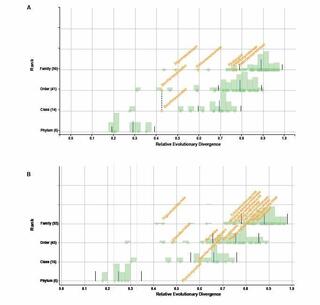A genome-informed higher rank classification of the biotechnologically important fungal subphylum Saccharomycotina
M. Groenewald et al. "A genome-informed higher rank classification of the biotechnologically important fungal subphylum Saccharomycotina" Studies in Mycology 105:1-22 (2023) [DOI:10.3114/sim.2023.105.01]
The subphylum Saccharomycotina is a lineage in the fungal phylum Ascomycota that exhibits levels of genomic diversity similar to those of plants and animals. The Saccharomycotina consist of more than 1 200 known species currently divided into 16 families, one order, and one class. Species in this subphylum are ecologically and metabolically diverse and include important opportunistic human pathogens, as well as species important in biotechnological applications. Many traits of biotechnological interest are found in closely related species and often restricted to single phylogenetic clades. However, the biotechnological potential of most yeast species remains unexplored. Although the subphylum Saccharomycotina has much higher rates of genome sequence evolution than its sister subphylum, Pezizomycotina, it contains only one class compared to the 16 classes in Pezizomycotina. The third subphylum of Ascomycota, the Taphrinomycotina, consists of six classes and has approximately 10 times fewer species than the Saccharomycotina. These data indicate that the current classification of all these yeasts into a single class and a single order is an underappreciation of their diversity. Our previous genome-scale phylogenetic analyses showed that the Saccharomycotina contains 12 major and robustly supported phylogenetic clades; seven of these are current families (Lipomycetaceae, Trigonopsidaceae, Alloascoideaceae, Pichiaceae, Phaffomycetaceae, Saccharomycodaceae, and Saccharomycetaceae), one comprises two current families (Dipodascaceae and Trichomonascaceae), one represents the genus Sporopachydermia, and three represent lineages that differ in their translation of the CUG codon (CUG-Ala, CUG-Ser1, and CUG-Ser2). Using these analyses in combination with relative evolutionary divergence and genome content analyses, we propose an updated classification for the Saccharomycotina, including seven classes and 12 orders that can be diagnosed by genome content. This updated classification is consistent with the high levels of genomic diversity within this subphylum and is necessary to make the higher rank classification of the Saccharomycotina more comparable to that of other fungi, as well as to communicate efficiently on lineages that are not yet formally named.
All data associated with this study are provided in the main article and supplementary materials. The class- and order-specific orthologous groups (OGs) and their DNA and protein sequences are publicly available on FigShare.
